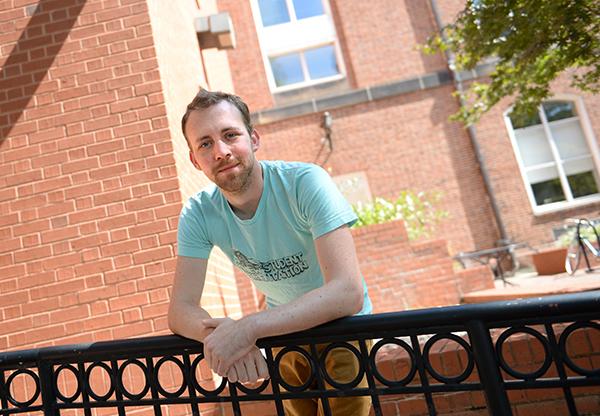Updated: Sept. 22, 2014 at 11:18 a.m.
Patrick Masterson remembers being on a “nickname basis with everyone” at the financial aid office at the Corcoran College of Art + Design.
“The Corcoran was interesting because it was so small,” said Masterson, now a senior. “Our financial aid office was approachable in that way. We were all close friends with each other in that department.”
But the difference in size isn’t the only change that students might notice after the Corcoran’s historic merger with GW. The University will add a step the Corcoran did not have in its financial aid application process: Considering details about a family’s wealth like real estate and stocks.
When future Corcoran students apply to GW, they will be required to fill out a second financial aid form in addition to the federal forms the Corcoran required. Administrators say that second look allows them to see more fully what a student can afford to pay, by analyzing details like real estate and the value of family-owned businesses, which are left off federal forms.
Still, some experts say this added step could shrink aid packages overall. Mark Kantrowitz, senior vice president of financial aid counseling website Edvisors.com, said adding the second form to the process “generally means the college will be less generous.”
“It’s to prevent wealthy students from looking like they are poor. Generally speaking, most students will get less aid and a handful will get more,” Kantrowitz said.
GW met about 87 percent of need last year. But it will now have to balance the need demonstrated by Corcoran students: About 36 percent of Corcoran students received Pell grants – federal aid for the lowest-income students – in 2012, more than double the amount at GW. About 92 percent of Corcoran students receive some sort of merit-based or need-based aid.
Forrest Maltzman, senior vice provost for academic affairs and planning, said GW’s financial aid pool will likely increase “very slightly” because of the merger.
“When we have the Corcoran and we are bringing in more students, we will have to put enough money in the aid pot to cover their aid,” he said.
GW will honor financial aid packages for current Corcoran students and carry over the Corcoran’s endowed scholarships, and they will keep the same tuition rate this year.
But Maltzman said because GW has always had one tuition rate for undergraduates, future Corcoran students will likely pay GW’s tuition of $48,700, an almost $17,000 increase from the Corcoran’s tuition. The Board of Trustees will make the final call on that move this spring.
Last fall, GW publicly admitted for the first time that it places a portion of applicants on the waitlist each year if they cannot afford to pay full tuition. But Senior Associate Provost for Enrollment Management Laurie Koehler said the new process on the financial aid application will allow the University to be more generous when giving aid to students.
“I don’t think our need-aware policy would discourage needy students from applying because the goal is to give them better aid packages,” Koehler said. “We think there are opportunities here for us to attract great artists who are drawn by the Corcoran tradition and history and culture. They get a new set of students who may want that art experience within a larger, broader kind of university.”
The Board of Trustees signed off on a 3.6 percent increase to GW’s financial aid pool last spring, swelling it to about $170 million. The year before, the pool had decreased by nearly $2 million because of a smaller incoming class of freshmen, Maltzman said at the time.
About 180 undergraduates from the Corcoran came to GW this fall, and Maltzman said around 50 will join the incoming freshmen class each year in the future.
GW received the Corcoran’s $43 million endowment in its deal. Most of that money will be put toward renovations of the Corcoran’s building, but about $8 million will go toward Corcoran operations.
Colleen Murphy contributed to this report.
This post was updated to reflect the following correction:
The Hatchet incorrectly spelled the last name of GW’s senior associate provost for enrollment management, Laurie Koehler. It is Koehler, not Kohler. We regret this error. The post was also updated to include her title.







